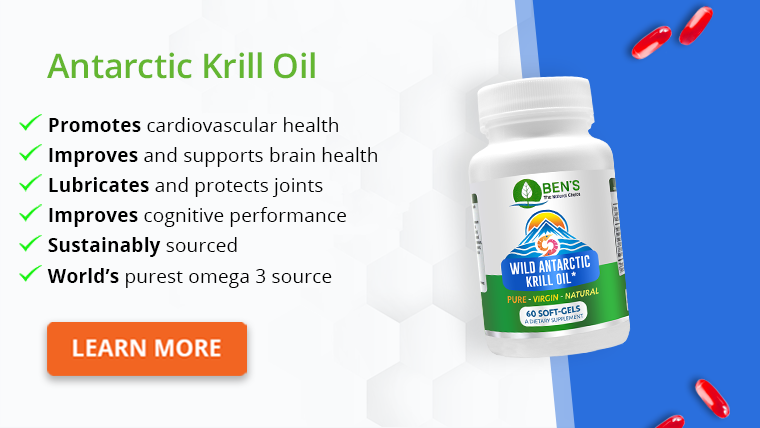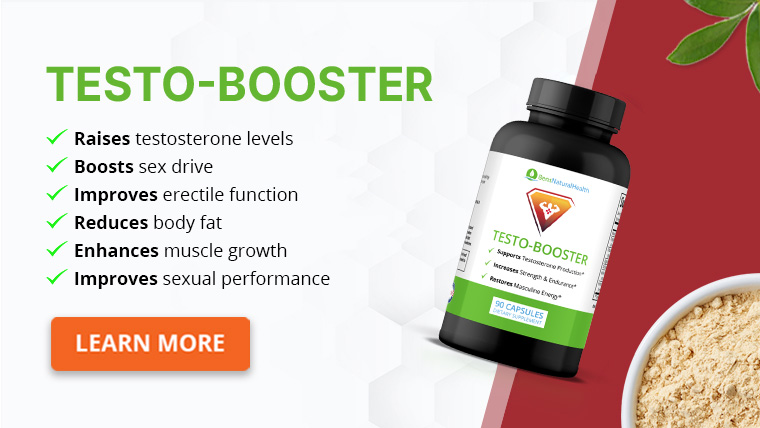We often hear about bad cholesterol and heart attack in males.
But is it a problem for women, too?
There’s a common misconception that women do not suffer from high cholesterol as frequently as men.
Under this belief, they may not check their cholesterol levels and think they are fine.
But according to the CDC, almost the same proportion of males and females die yearly due to heart problems.
Heart disease is the number one cause of death in women, and an alarming rate of women are unaware.
But how is cholesterol linked to heart disease in women?
What are normal cholesterol levels for women, and what can you do to stay healthy?
Keep reading to learn the answers to these questions and more.
What is cholesterol?
Cholesterol is a fatty substance found throughout the body and in your blood. It is an integral part of the cell wall and fundamental to regenerating your tissues. It is also required to create sex hormones and other steroids.
Thus, your body needs cholesterol to work properly. But when cholesterol levels are high, they can stick to the walls of your arteries.
Add inflammation and free radicals, and you will have an arterial blockage. This is known as atherosclerosis.
The problem with cholesterol is not fat itself. It is the type of fat and how much of it we eat every day. Excess fat causes atherosclerosis, as described above. This can lead to heart disease, heart attack, and stroke.
Types of cholesterol
As mentioned above, fat is not the enemy. We have various types of fat in the body.
As for cholesterol, there are big carriers in the blood called lipoproteins. They transport cholesterol in the blood. We usually call lipoproteins cholesterol because it is the most common type of fat they carry in the blood.
There are two main types of cholesterol or lipoprotein carriers (1):
LDL (low-density lipoprotein) cholesterol
This is the famous “bad” cholesterol. It carries cholesterol from the liver to the tissues.
The problem is that excess cholesterol builds up on your arteries’ walls and causes atherosclerosis. LDL cholesterol is oxidized by free radicals and starts a complex process that forms plaques in the arteries.
HDL (high-density lipoproteins) cholesterol
This is known popularly as “good” cholesterol. It helps remove excess cholesterol from your arteries and other parts of the body.
That’s why HDL cholesterol has a lower limit instead of an upper limit. In other words, you want this type of cholesterol to remain relatively high.
Other types of body fat
Besides the basic HDL and LDL cholesterol, there are other lipoproteins in the body. For example, we have VLDL, which stands for very low-density lipoprotein. We also have chylomicrons and other carrier particles.
Altogether, these types of cholesterol are included in total cholesterol readings. That’s why doctors measure total cholesterol with HDL and LDL to know the complete breakdown.

Normal cholesterol levels for women by age
Below, we share the ranges of normal cholesterol for women for total, LDL, and HDL cholesterol levels.
Total cholesterol
As mentioned above, total cholesterol is the amount of LDL and HDL cholesterol in your blood. These are the ranges of total cholesterol levels for women.
As you can see, the range is slightly higher in women after 20 years (2):
- The ideal total cholesterol level should stay below 200 milligrams per deciliter (mg/dL). But if you are younger than 20 years, the normal range is below 170 mg/dL.
- If your total cholesterol is 200 to 239 mg/dL, it’s considered borderline high. In women younger than 20 years, borderline levels stay in the range of 170 to 199 mg/dL.
- A level of 240 mg/dL and above is considered high. If you are younger than 20, 200 mg/dL is already high.
LDL cholesterol
As mentioned above, LDL cholesterol is known as “bad” cholesterol. This is the type you should keep under the threshold.
These are the ranges of LDL cholesterol levels for women. In this case, the normal ranges are higher in some cases and lower in others:
- The ideal LDL cholesterol levels should stay lower than 100 mg/dL. But if you are younger than 20 years, the highest LDL cholesterol level should be 110 mg/dL.
- If your LDL cholesterol is 100 to 159 mg/dL, it’s considered borderline. In women younger than 20 years, it corresponds to the range of 110 to 129 mg/dL.
- A level of 160 mg/dL and above is considered high in women. But if you’re younger than 20, the upper threshold is 130 mg/dL.
HDL cholesterol
The normal cholesterol range is different for HDL. This particle should stay high.
These are the normal ranges for women:
- In women younger than 20 years, HDL cholesterol is normal when it stays above 45 mg/dL.
- If you are 20 years or older, HDL cholesterol levels should be a minimum of 50 mg/dL.
What are the warning signs of high cholesterol?
There are usually no symptoms of high cholesterol (hypercholesterolemia), so if you want to detect fat levels in your blood, you must check your blood cholesterol levels regularly.
The only way to ensure you don’t have high cholesterol levels is through blood cholesterol testing (1,2). Alternatively, there are some home cholesterol tests you can try. However, they are not accurate.
Instead of warning signs, high cholesterol levels have complications. It only gives symptoms when the disease progresses and starts damaging your organs.
Complications of high cholesterol
We have mentioned that high cholesterol is a crucial heart disease risk factor. The most relevant complication of high cholesterol is cardiovascular disease. This umbrella term includes stroke, coronary heart disease, and a variety of peripheral vascular diseases.
But that is just the beginning. High cholesterol is associated with many other chronic ailments (3):
Coronary heart disease
It includes heart attacks and milder problems called angina. In these cases, the heart’s blood vessels become narrow, and atherosclerosis is a common cause.
Diabetes
There is a strong link between cholesterol and diabetes. You could say that high cholesterol is even more dangerous in people with type 2 diabetes.

Stroke
It is also known as cerebrovascular disease. Cholesterol buildup plaques also affect brain blood vessels. These plaques reduce blood flow to the brain. When the blood flow is completely blocked, a stroke happens.
Peripheral vascular disease
You may also find it as peripheral artery disease or simply “circulation problems.” In this case, atherosclerosis is throughout the body, and narrowed arteries do not supply enough oxygen. The most common symptoms are cramps and tingling in the upper and lower extremities.
High blood pressure
High cholesterol levels trigger inflammation, thus constricting blood vessels. When arteries are narrow, the blood pressure level increases. That’s why many people with high cholesterol also use a blood pressure medication.
Erectile dysfunction
Males can also get erectile dysfunction when atherosclerosis builds up in the penile tissue.

When to see a doctor
You can have high cholesterol and not know it. That’s because it doesn’t usually have symptoms.
How is cholesterol measured? A simple blood test can tell you if your cholesterol levels are too high.
Thus, do not wait for symptoms or alarm signs to check yourself by a healthcare professional. You might need to take something, and they are not over-the-counter medications.
In many cases, high cholesterol levels are diagnosed along with one of the complications listed above. Ideally, you shouldn’t wait for a complication.
If you are healthy and do not suffer from chronic disease or obesity, check your cholesterol levels every four years. If you have a chronic disease, ask your doctor how often check-ups are needed in your case.
How to lower your cholesterol levels naturally
Having high cholesterol levels in your blood raises your risk for heart disease and stroke. But there are things you can do to lower your risk.
You can:
- Exercise.
- Lose weight if you are overweight.
- Quit cigarette smoking.
- Change your diet. Eat foods that are low in saturated and trans fats.
Get Your FREE Diabetes Diet Plan
- 15 foods to naturally lower blood sugar levels
- 3 day sample meal plan
- Designed exclusively by our nutritionist
What are the worst foods for high cholesterol?
Out of the lifestyle changes listed above, changing your diet is perhaps one of the most important. But what foods should you avoid if you want to maintain lipid levels in check?
- Fatty cuts of red meat: Animal fat raises cholesterol levels very rapidly. Thus, look for lean cuts if you’re consuming pork, lamb, or beef.
- Fried foods: Stir-frying may feel tasty, but those chicken wings are probably causing high cholesterol. Use air fryers to replace the taste.
- Processed meats: This includes hot dogs, bacon, and sausages. They contain plenty of saturated fat and sometimes trans fat.
- Baked goods: They raise your triglycerides and cholesterol levels. If you can choose, use bananas or applesauce instead of butter to cook baked goods.
- Whole dairy products: Instead of using whole milk, go for skimmed milk. You can also try almond milk which contains better quality fatty acids.
Conclusion
Normal cholesterol levels in women are slightly different depending on their age. However, as a general measure, LDL levels should stay low. Ideally, they should be under 170 mg/dL. In contrast, good HDL numbers are higher than 50 mg/dL.
These cholesterol readings respond to their function, which is why LDL is known as “bad” cholesterol while HDL is regarded as “good” cholesterol.
You might experience a blood cholesterol level rise at any moment without symptoms. But it raises your cardiovascular disease risk.
Thus, a lipid profile is an important measure to keep cholesterol levels low in your bloodstream. Keeping your blood lipids in check will not only extend your lifespan but also prevent a handful of problems and chronic diseases.
Explore More








